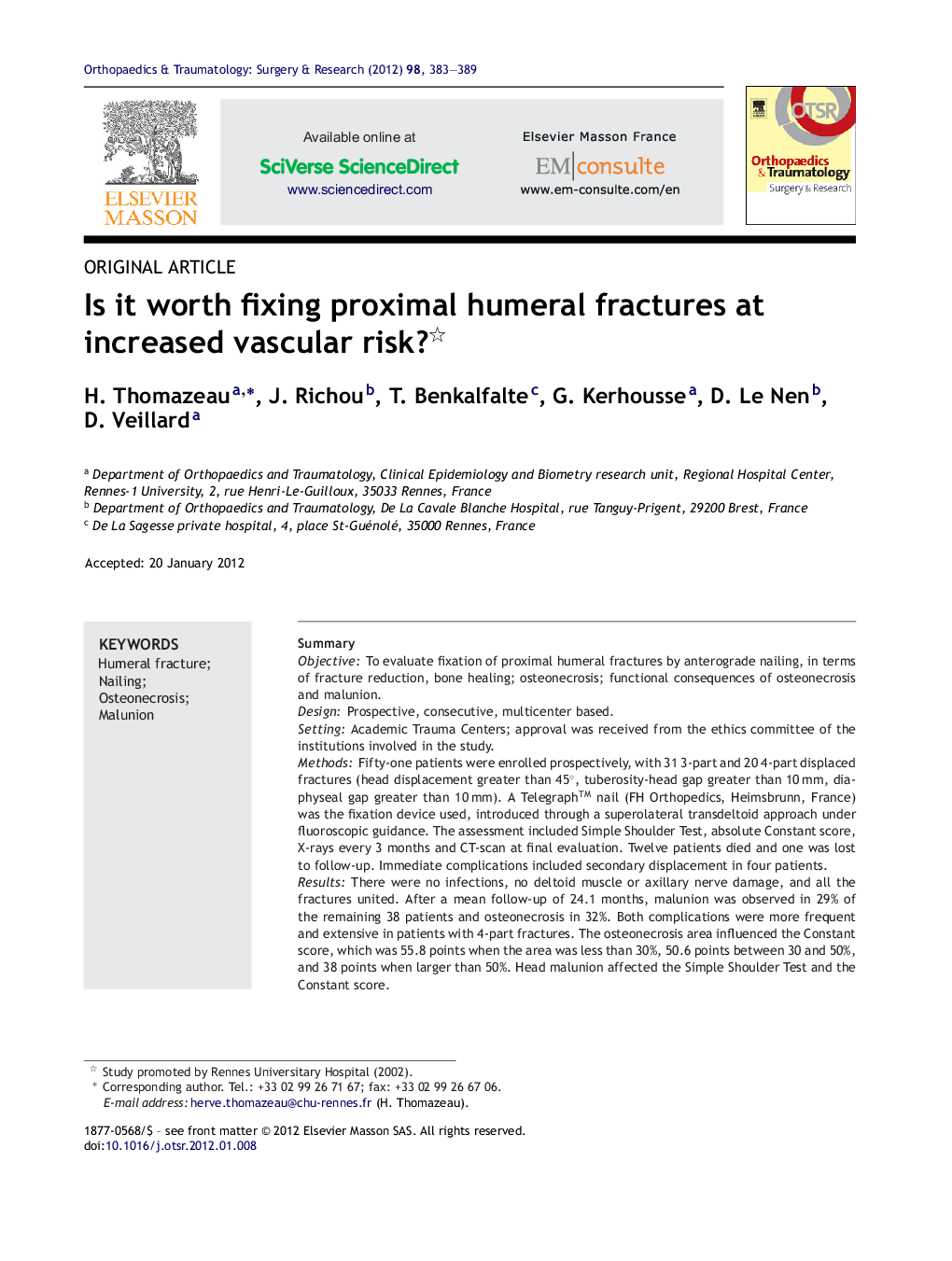| Article ID | Journal | Published Year | Pages | File Type |
|---|---|---|---|---|
| 4081820 | Orthopaedics & Traumatology: Surgery & Research | 2012 | 7 Pages |
SummaryObjectiveTo evaluate fixation of proximal humeral fractures by anterograde nailing, in terms of fracture reduction, bone healing; osteonecrosis; functional consequences of osteonecrosis and malunion.DesignProspective, consecutive, multicenter based.SettingAcademic Trauma Centers; approval was received from the ethics committee of the institutions involved in the study.MethodsFifty-one patients were enrolled prospectively, with 31 3-part and 20 4-part displaced fractures (head displacement greater than 45°, tuberosity-head gap greater than 10 mm, diaphyseal gap greater than 10 mm). A Telegraph™ nail (FH Orthopedics, Heimsbrunn, France) was the fixation device used, introduced through a superolateral transdeltoid approach under fluoroscopic guidance. The assessment included Simple Shoulder Test, absolute Constant score, X-rays every 3 months and CT-scan at final evaluation. Twelve patients died and one was lost to follow-up. Immediate complications included secondary displacement in four patients.ResultsThere were no infections, no deltoid muscle or axillary nerve damage, and all the fractures united. After a mean follow-up of 24.1 months, malunion was observed in 29% of the remaining 38 patients and osteonecrosis in 32%. Both complications were more frequent and extensive in patients with 4-part fractures. The osteonecrosis area influenced the Constant score, which was 55.8 points when the area was less than 30%, 50.6 points between 30 and 50%, and 38 points when larger than 50%. Head malunion affected the Simple Shoulder Test and the Constant score.ConclusionNailing may thus be recommended for 3-part fractures, because osteonecrosis is less frequent, more focused, and better tolerated in this sub-group. In contrast, antegrade nailing was not more beneficial than other internal fixation techniques for preventing osteonecrosis or head malunion in patients with 4-part fractures.Level of evidenceLevel IV: prospective study.
